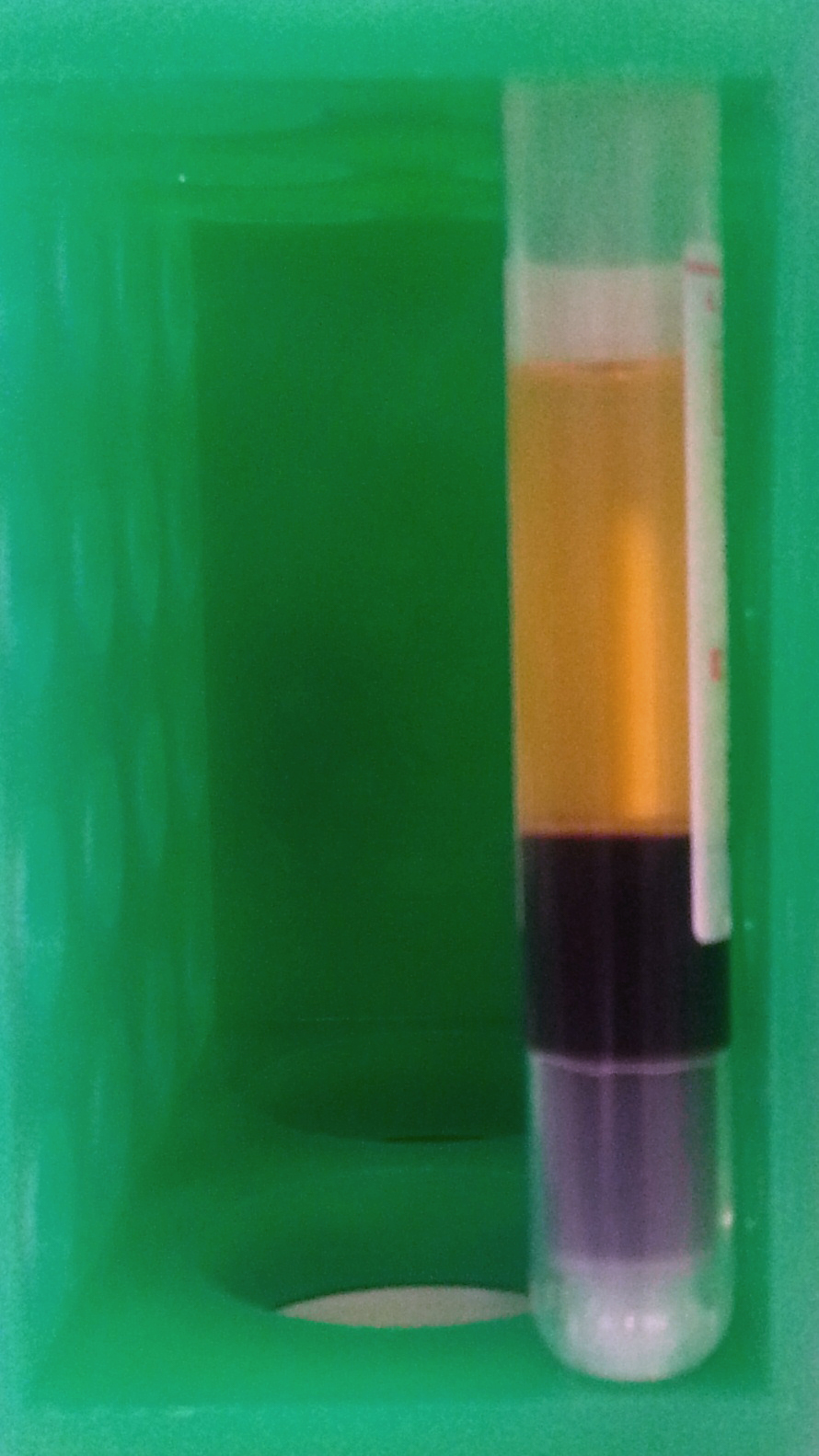Buffy Coat on:
[Wikipedia]
[Google]
[Amazon]
 The buffy coat is the
The buffy coat is the
 The buffy coat is the
The buffy coat is the fraction
A fraction (from la, fractus, "broken") represents a part of a whole or, more generally, any number of equal parts. When spoken in everyday English, a fraction describes how many parts of a certain size there are, for example, one-half, eight ...
of an anticoagulated blood sample that contains most of the white blood cell
White blood cells, also called leukocytes or leucocytes, are the cell (biology), cells of the immune system that are involved in protecting the body against both infectious disease and foreign invaders. All white blood cells are produced and de ...
s and platelets following centrifugation
Centrifugation is a mechanical process which involves the use of the centrifugal force to separate particles from a solution according to their size, shape, density, medium viscosity and rotor speed. The denser components of the mixture migrate ...
. It is rich in a number of immune cells including leukocytes, granulocyte
Granulocytes are
cells in the innate immune system characterized by the presence of specific granules in their cytoplasm. Such granules distinguish them from the various agranulocytes. All myeloblastic granulocytes are polymorphonuclear. They ha ...
s.
Description
After centrifugation, one can distinguish a layer of clear fluid (theplasma
Plasma or plasm may refer to:
Science
* Plasma (physics), one of the four fundamental states of matter
* Plasma (mineral), a green translucent silica mineral
* Quark–gluon plasma, a state of matter in quantum chromodynamics
Biology
* Blood pla ...
), a layer of red fluid containing most of the red blood cells, and a thin layer in between. Composing less than 1% of the total volume of the blood sample, the buffy coat (so-called because it is usually buff in hue), contains most of the white blood cells and platelets. The buffy coat is usually whitish in color, but is sometimes green if the blood sample contains large amounts of neutrophils
Neutrophils (also known as neutrocytes or heterophils) are the most abundant type of granulocytes and make up 40% to 70% of all white blood cells in humans. They form an essential part of the innate immune system, with their functions varying in ...
, which are high in green-colored myeloperoxidase. The layer beneath the buffy coat contains granulocytes and red blood cells
Red blood cells (RBCs), also referred to as red cells, red blood corpuscles (in humans or other animals not having nucleus in red blood cells), haematids, erythroid cells or erythrocytes (from Greek language, Greek ''erythros'' for "red" and ''k ...
.
The buffy coat is commonly used for DNA extraction, with white blood cells providing approximately 10 times more concentrated sources of nucleated cells. They are extracted from the blood of mammal
Mammals () are a group of vertebrate animals constituting the class Mammalia (), characterized by the presence of mammary glands which in females produce milk for feeding (nursing) their young, a neocortex (a region of the brain), fur or ...
s because mammalian red blood cells are anucleate and do not contain DNA. A common protocol is to store buffy coat specimens for future DNA isolation and these may remain in frozen storage for many years.
Some refer to the buffy coat when separating cells by Ficoll density gradients. This usage of the expression buffy coat is incorrect.
Diagnostic uses
Quantitative buffy coat (QBC), based on the centrifugal stratification of blood components, is a laboratory test for the detection of malarial parasites, as well as of other blood parasites. The blood is taken in a QBC capillary tube which is coated with acridine orange (a fluorescent dye) and centrifuged; thefluorescing
Fluorescence is the emission of light by a substance that has absorbed light or other electromagnetic radiation. It is a form of luminescence. In most cases, the emitted light has a longer wavelength, and therefore a lower photon energ ...
parasitized erythrocytes get concentrated in a layer which can then be observed by fluorescence microscopy, under ultraviolet light at the interface between red blood cells and buffy coat. This test is more sensitive than the conventional thick smear and in > 90% of cases the species of parasite can also be identified.
In cases of extremely low white blood cell count, it may be difficult to perform a manual differential of the various types of white cells, and it may be virtually impossible to obtain an automated differential. In such cases, the medical technologist may obtain a buffy coat, from which a blood smear is made. This smear contains a much higher number of white blood cells than whole blood.
See also
* Leukocytes * Ficoll * MalariaReferences
External links
* {{MeshName, Blood Buffy Coat Blood Immunology Malaria